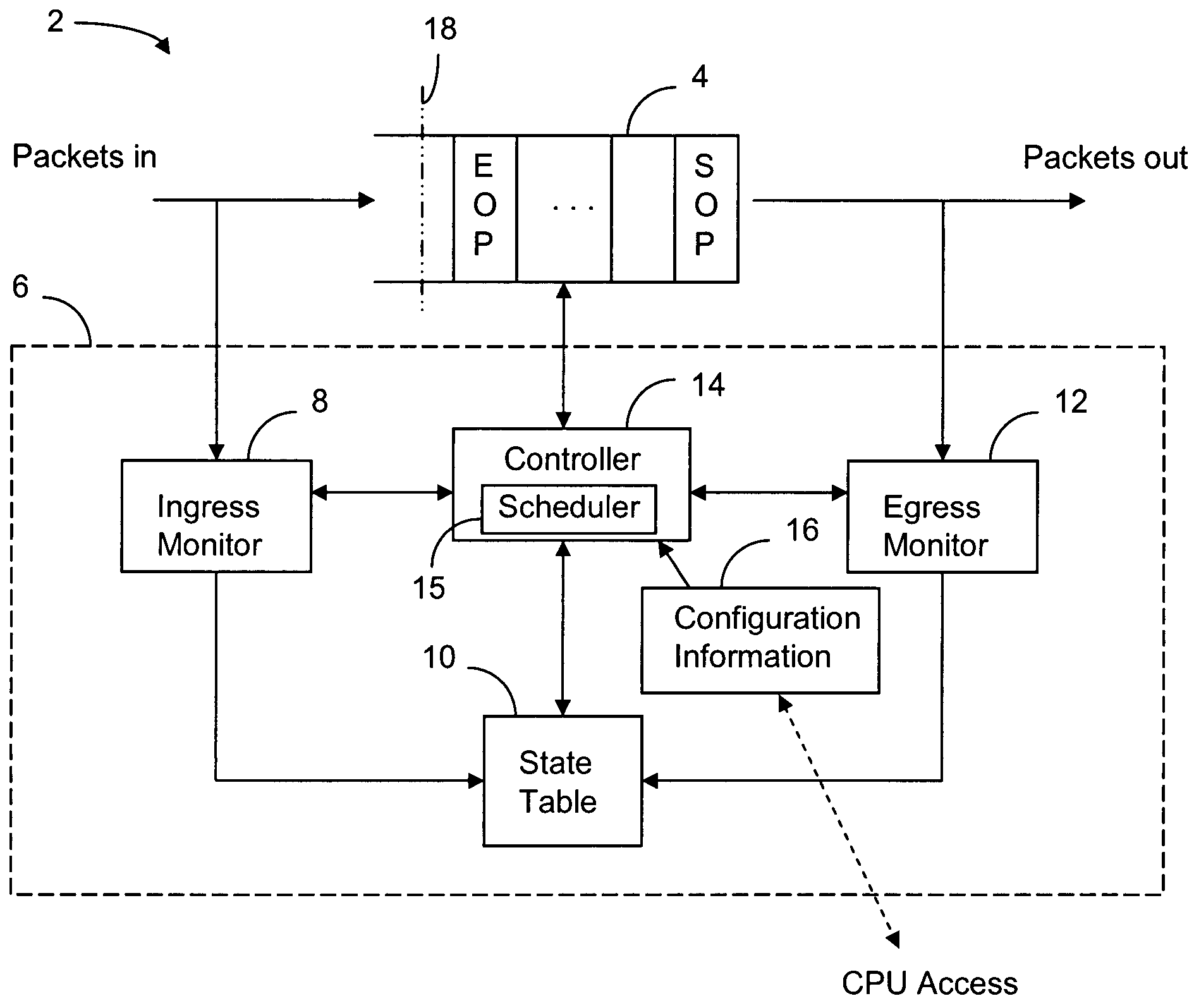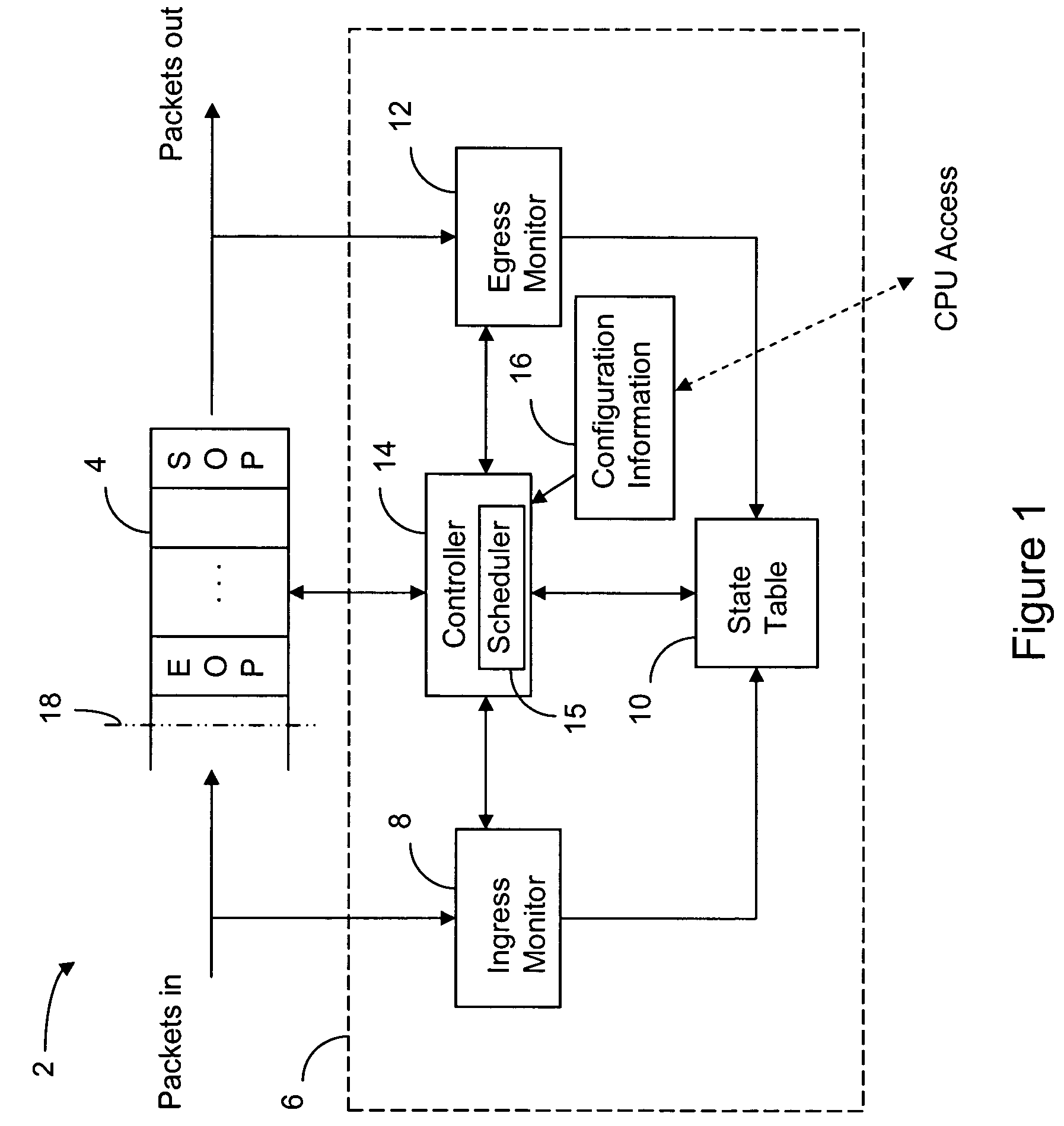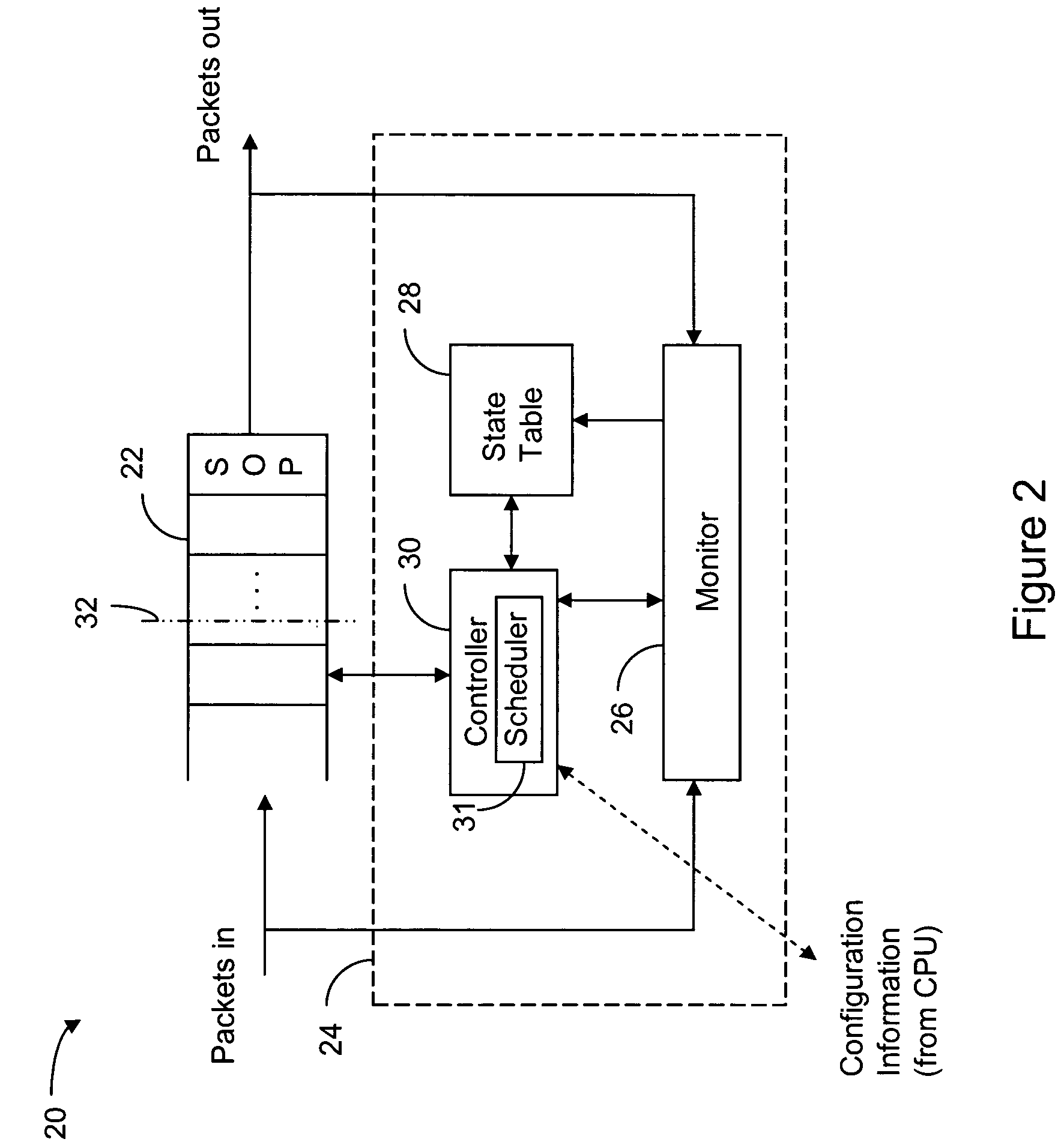Input/output buffer controller for optimized memory utilization and prevention of packet under-run errors
a buffer controller and memory utilization technology, applied in the field of data packet interfaces, can solve problems such as difficult and costly construction of data packet communication systems with a large number of i/o interface ports, etc., to prevent corruption of transmitted data packets, slow down the ingress rate of fifo data, and alleviate the pause during transmission of data packets
- Summary
- Abstract
- Description
- Claims
- Application Information
AI Technical Summary
Benefits of technology
Problems solved by technology
Method used
Image
Examples
first embodiment
[0022]Referring to FIG. 1, an intelligent data packet I / O buffer 2 includes a FIFO buffer 4 and a FIFO buffer controller 6. The FIFO buffer 4 receives data packets at an ingress FIFO data rate N from upstream data packet processing equipment in a data packet communications system. The FIFO buffer 4 temporarily stores one or more of the data packets, and in some cases only a part of a data packet, before transmission of one or more of the data packets from the FIFO buffer 4 is initiated. Such transmission of data packets from the FIFO buffer 4 to an I / O interface of the data packet communication system occurs at an egress I / O data rate M, which is greater than the ingress FIFO data rate N. The FIFO buffer 4 is shown having a contents of a single data packet; the start of the data packet (SOP) being at the start, or first, position of the FIFO buffer 4 and the end of the data packet (EOP) being at a later position in the FIFO buffer 4. Since the EOP is at the last position in the FIFO...
second embodiment
[0028]The depiction of the second embodiment shows a data packet being received by the FIFO buffer 22. The fill-level of the FIFO buffer 22 is just past the threshold 32. Hence the FIFO buffer controller 24 would have initiated transmission of the data packet from the FIFO buffer 22.
[0029]Referring to FIG. 3, a third embodiment of an intelligent data packet I / O buffer 34 includes a FIFO controller 44 and a FIFO buffer 36. The differences between the second and third embodiments of the intelligent data packet I / O buffer 20, 34 stem from the FIFO buffer 36. The FIFO buffer 36 is divided into three logical FIFO buffers 38, 40, and 42. The logical FIFO buffers 38, 40, and 42 each have a respective threshold 56, 58, 60 used for determining whether or not to initiate transmission of a data packet, or partial data packet, stored in therein. The logical FIFO buffers 38, 40, and 42 could be used for storing data packets of different types, for example data packets destined to different ports...
PUM
 Login to View More
Login to View More Abstract
Description
Claims
Application Information
 Login to View More
Login to View More - R&D
- Intellectual Property
- Life Sciences
- Materials
- Tech Scout
- Unparalleled Data Quality
- Higher Quality Content
- 60% Fewer Hallucinations
Browse by: Latest US Patents, China's latest patents, Technical Efficacy Thesaurus, Application Domain, Technology Topic, Popular Technical Reports.
© 2025 PatSnap. All rights reserved.Legal|Privacy policy|Modern Slavery Act Transparency Statement|Sitemap|About US| Contact US: help@patsnap.com



